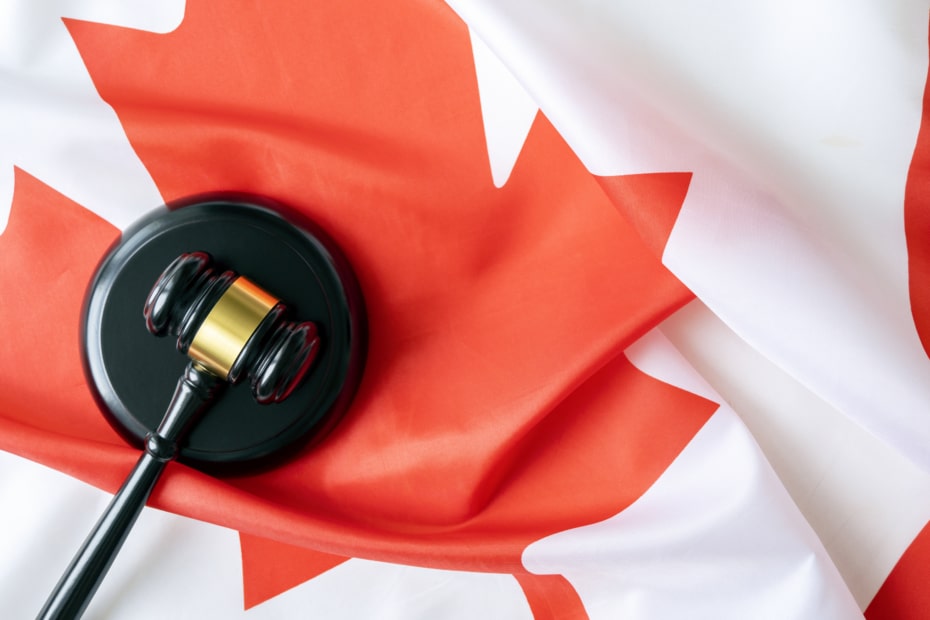Call Us At 519.672.5666
Insights & Articles
Unpacking the Legal Battle That Shaped Cannabis Policy: Revisiting R v. Malmo-Levine; R v. Caine

Originally Posted by the Middlesex Law Association’s June Issue. Written by Summer Student, Garrett Van Louwe, with guidance from Lawyer, Hilary Jenkins.
As a young person in the legal profession, reading R v. Malmo-Levine; R v. Caine is a fascinating experience. On the one hand, the case feels like a relic of a bygone era. In a world where cannabis stores line the streets of most major urban centres in Canada, convicting someone for personal cannabis possession is as anachronistic as blasphemy or witchcraft offenses. On the other hand, the status quo that birthed R v. Malmo-Levine; R v. Caine is far from distant. Just five years ago, cannabis was regulated primarily through criminal prohibitions on its possession and sale. Just fifteen years ago, cannabis legalization was a pie-in-the-sky policy proposal that was only seriously considered by libertarians and progressive academics. Despite this sudden cultural and legal shift regarding its subject matter, R v. Malmo-Levine; R v. Caine stands the test of time and continues to be a well-written treatise on the relationship between the Charter of Rights and Freedoms and the state’s ability to legislate cannabis.
In R v. Malmo-Levine; R v. Caine, the Supreme Court of Canada confronted the issue of whether prohibitions against the personal possession of cannabis were unconstitutional under section 7 of the Charter. Namely, the respondents argued that section 7 embedded the “harm principle” (which holds that legitimate use of the criminal law power requires that the illegal action cause some tangible harm to another person) as a principle of fundamental justice and criminal legislation that did not follow the harm principle was, therefore, unconstitutional. In the alternative, it was instead claimed that prohibitions with potential imprisonment for cannabis users was grossly disproportionate to the severity of harm caused by cannabis possession and, therefore, unconstitutional under section 12’s guarantee against cruel and unreasonable punishment. In response, the Supreme Court rejected that the harm principle is a principal of fundamental justice because there is no social consensus that the harm principle is indispensable to criminal justice and the harm principle is not manageable as a standard for section 7 claims. Likewise, the Court found that preventing harm arising from the negative health risks of consuming cannabis and protecting groups that are particularly vulnerable to cannabis was enough to not make the criminalization of cannabis unconstitutional on its face. While the Court conceded that incarceration may be disproportionate for some cannabis offenses, the absence of any mandatory minimums and sentencing guidelines ensured that cannabis sentences were generally proportionate and, as such, these regulations were not so punitive as to be disproportionate.
R v. Malmo-Levine; R v. Caine’s primary strength as a 2003 decision being read in 2023 is its focus on reasonable disagreement and legislative deference. Throughout their decision, the Supreme Court notes multiple times that they are commenting solely on the federal government’s constitutional authority to legislate cannabis and not whether criminalization is an effective policy for the regulation of cannabis in Canada. When stating the ultimate ruling of the case, the Court even qualifies their judgment with “[e]qually, it is open to Parliament to decriminalize or otherwise modify any aspect of the marihuana laws that it no longer considers to be good public policy”. It is not difficult to imagine a timeline where the Supreme Court instead placed the bulk of their analysis on determining the true harm of cannabis, entrenching now-outdated studies and data as foundational law on the availability of cannabis in Canada. Similarly, with hindsight, it is clear that exercising judicial restraint when commenting on cannabis policy and allowing the law to change via statutory amendments to the Criminal Code rather than judicial review was the correct decision to make. Following R v. Malmo-Levine; R v. Caine, many Canadians’ perspectives shifted on cannabis, going from the belief that cannabis posed a large enough danger to society to justify total prohibition of the substance to instead acquiring a “live-and-live” attitude based around solely regulating the negative externalities of cannabis use. By remaining out of the substance of cannabis debate, the Court created the opportunity for Parliament to amend the cannabis policy to reflect this shift instead of delegating a “winner” and permanently entrenching their interests into law in spite of Canadian society’s contemporary or future opinions regarding cannabis. Furthermore, the general chaos that unfolded at the provincial level following the legalization of cannabis provides another reason that the Supreme Court of Canada made the proper decision politically. In implementing schemes to distribute cannabis in their jurisdictions, some of the various provincial governments’ plans had faults that later needed to be amended. For example, the process for applying for Retail Store Authorization to run a recreational cannabis store in Ontario requires registering the store’s address. However, there was no method to see other pending applications, resulting in numerous people applying to open cannabis stores in the same general location and, with it, an overabundance of cannabis stores for this beforementioned location. If a “controlled burn” approach to legalization designed to give the provinces time to get their ducks in a row was this turbulent, how chaotic would overnight legalization via judicial fiat have been? As such, leaving Parliament as the ultimate decision-maker in cannabis policy prevented outdated data from being indivisibly integrated into the law, allowed policy to shift with public perception, and provided a superior method of developing a regulated market for cannabis at the provincial level.
This article was written by Summer Student, Garrett Van Louwe, with guidance from Family Law Lawyer Hilary Jenkins. For additional information, please do not hesitate to contact garrett.vanlouwe@mckenzielake.com or hilary.jenkins@mckenzielake.com.
If you require assistance with any legal matter, speak to a lawyer at McKenzie Lake Lawyers LLP by calling (519) 672-5666.

